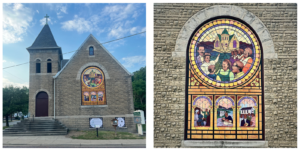History
A Century of Prosperity
Mount Zion Baptist Church served as the key gathering place for the Black community of Athens and Southeast Ohio from 1905 until the 1990s. Over the course of its rich history, the church supported the cultural and social contributions of Black Americans in the Ohio River Valley.
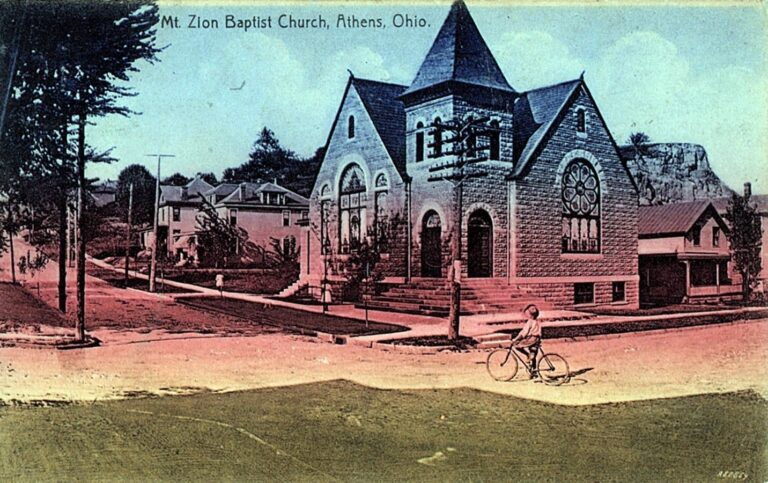
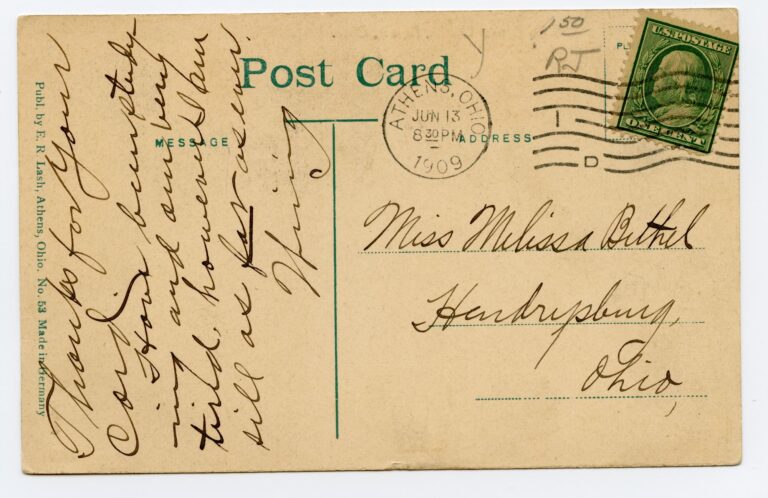
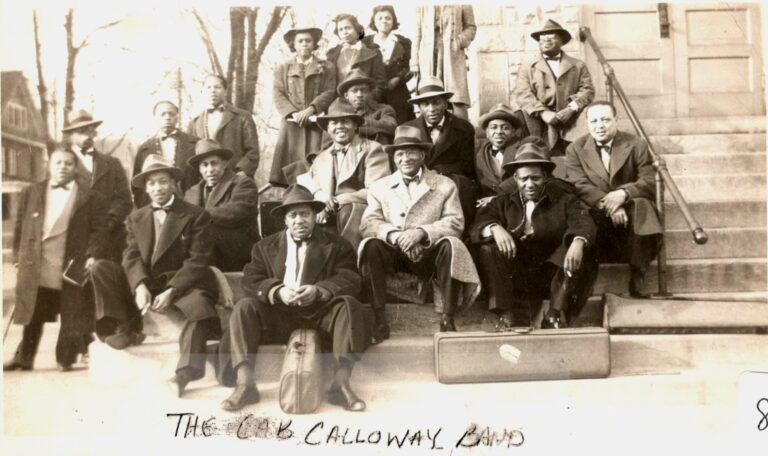
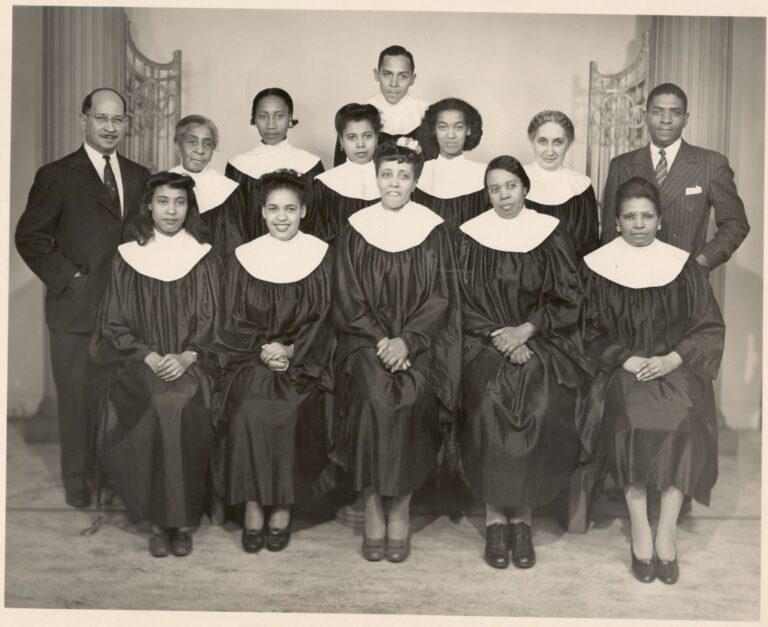
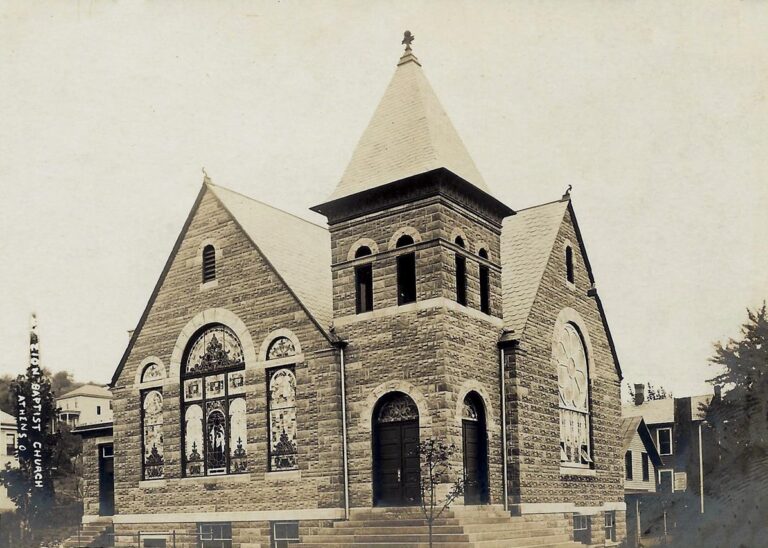
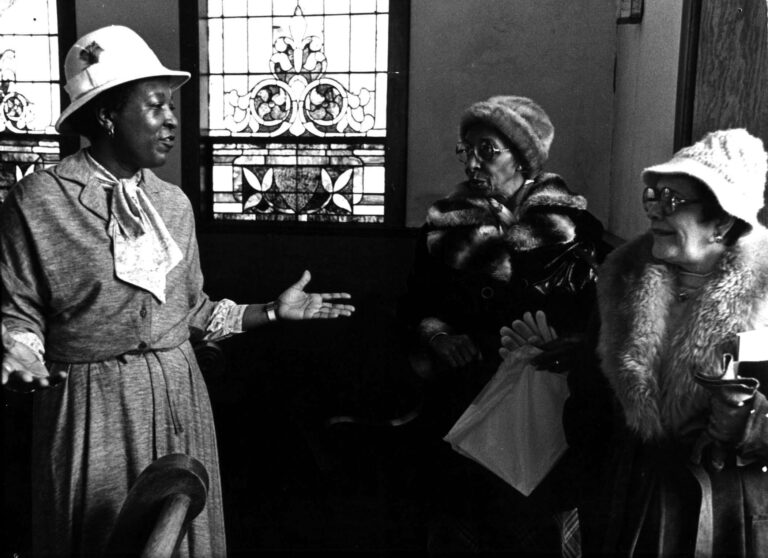
Cornerstone for the Black Community
Between 1905 and 1909, a thriving community of free born and formerly enslaved Black Americans built the Mount Zion Baptist Church as a place of spiritual solace and social connection. The historic building stands at the intersection of Carpenter and Congress streets in uptown Athens as one of few remaining examples of Black American architecture in Southeastern Ohio. The region was once nationally renowned for Black entrepreneurship, education, and community building. Unfortunately, many of the area’s numerous Underground Railroad stations remain unidentified, and sites associated with prominent Black-owned and operated schools (e.g. Albany Enterprise Academy, est. 1864) and businesses (e.g. Berry Hotel, est. 1892) are no longer standing.
During the public groundbreaking ceremony for Mount Zion on November 12th, 1905, among the items placed within its cornerstone were copies of Black Ohio newspapers. Their inclusion reminds us today, 115 years later, of the church’s important mission to amplify the perspectives and accomplishments of Black Americans. Throughout the 20th century, Mount Zion did just that by functioning as a vital education hub for members of the Black community. Bible classes and choir rehearsal provided spaces free of cultural prejudice and racial discrimination, where Black congregants could develop, hone, and expand their thought, speech, and voice. Despite its fluctuating membership, Mount Zion has nurtured an environment of Black worldmaking and identity formation that continues to inspire and propel hope.
Historical Timeline
-
1872
A small group of Black Athenians gather for religious services at the home of Joseph and Henrietta Miller.
-
1876
Services held in a wood-framed single room church on Lancaster Street.
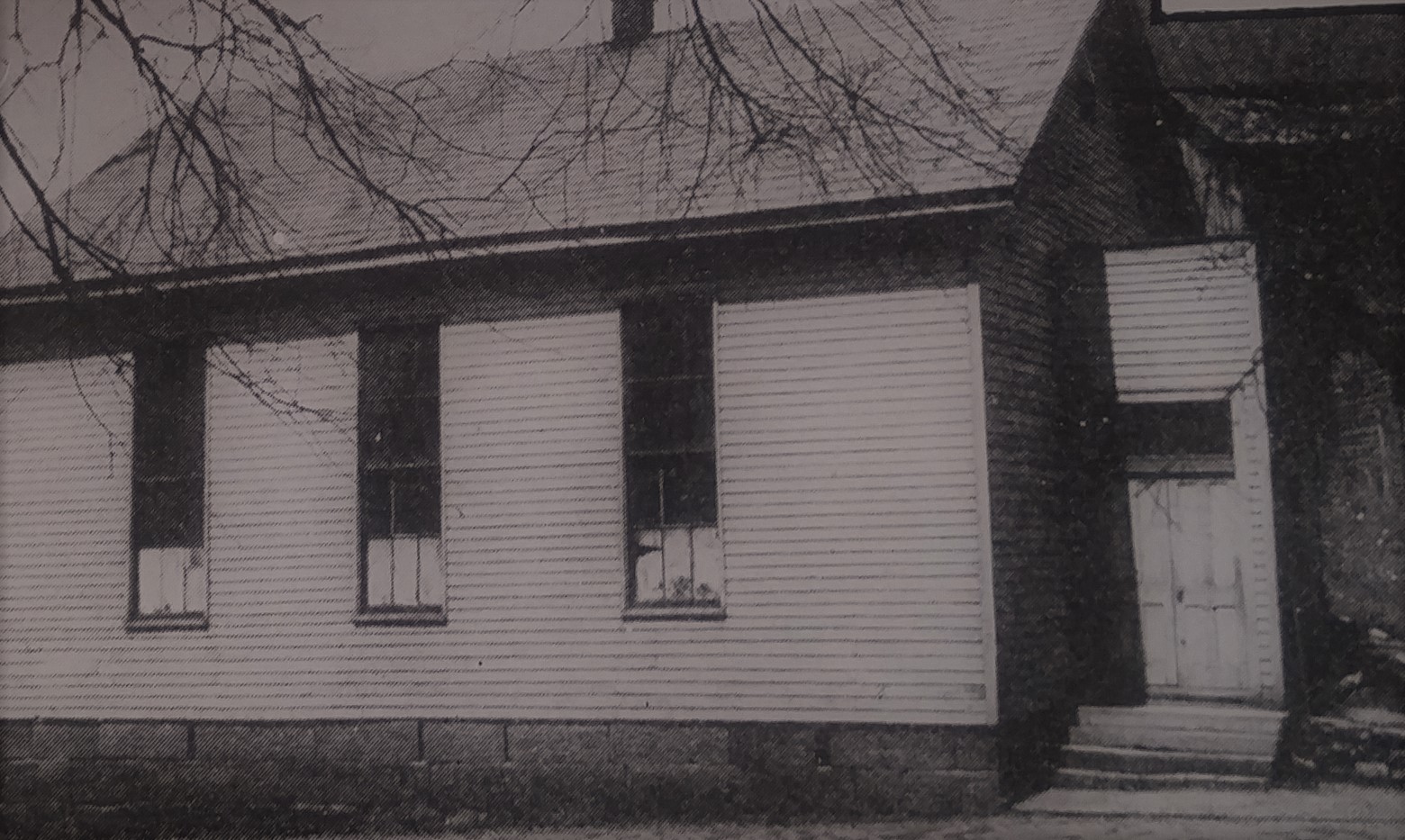
-
1885
During the 1880s and 90s, before the new church building was constructed, baptisms took place in the Hocking River (Athens Messenger, 25 April 1895).
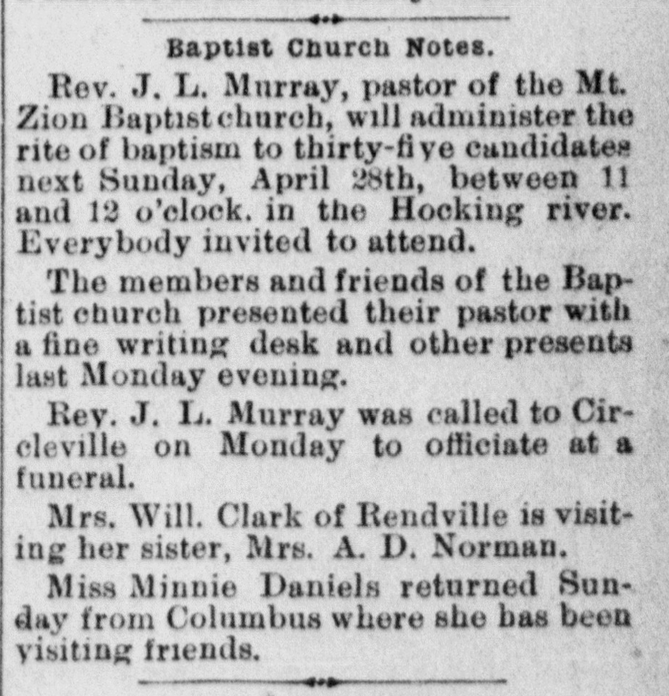
-
1902
Church members Edward and Mattie Berry donated a corner lot in an underdeveloped part of uptown Athens as land for the new building. The Berrys were renowned entrepreneurs, having built, owned, and operated the Berry Hotel from 1892 to 1921. Their historic building was demolished by developers in 1974.
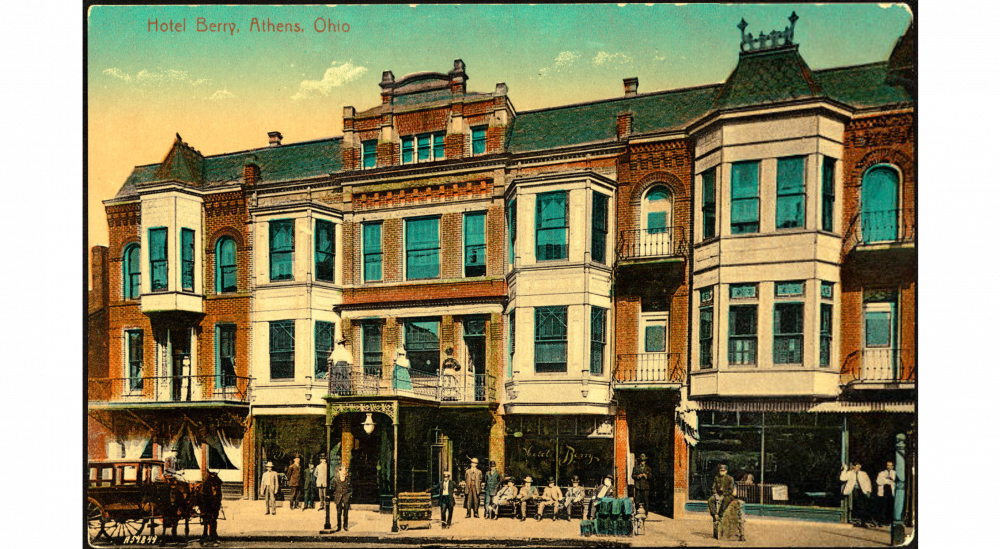
-
1905
Ground-breaking ceremony on September 12 (Athens Messenger, 21 September 1905)
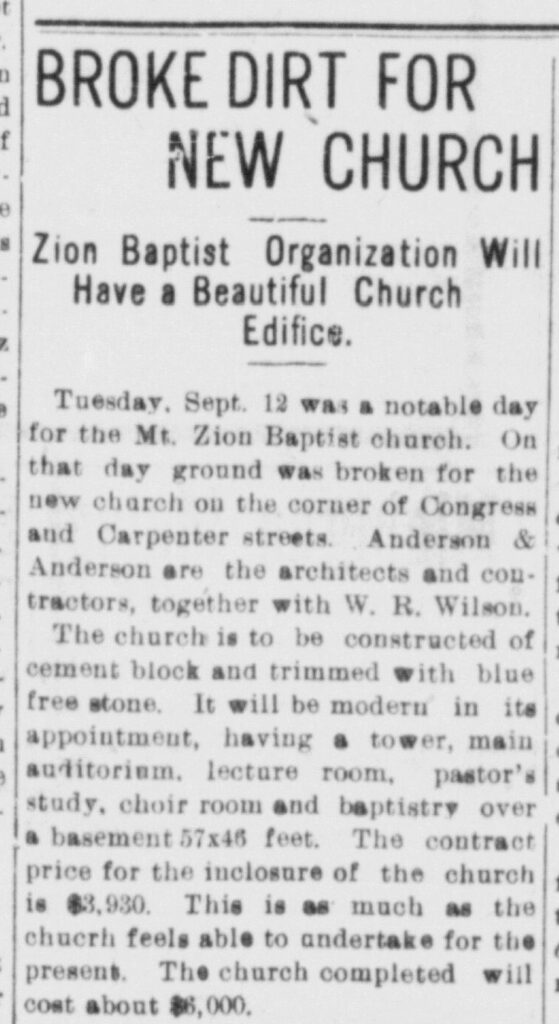
-
1906
Starting in September, church services were held in the basement of the new building (Athens Messenger, 8 September 1906).
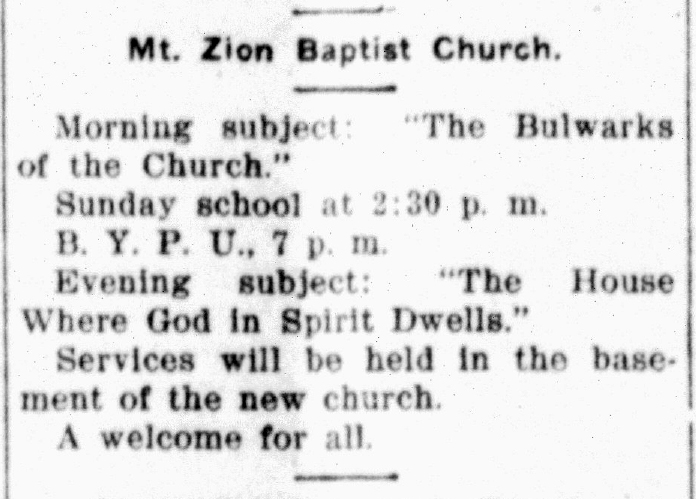
-
1909
Building formally dedicated in a three-day ceremony in September (Athens Messenger, 25 September 1909).

-
1940
Bible classes and choir rehearsals provided spaces free of prejudice and discrimination, where Black congregants could develop, hone, and expand their thought, speech, and voice. The choir is seen here during the 1940s.
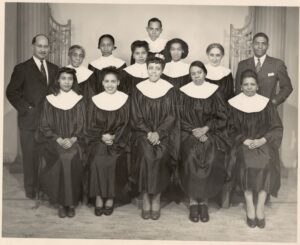
-
1942
Cab Calloway and his orchestra visited the church when they came to Athens to perform at the Ohio University Junior Prom on March 20.
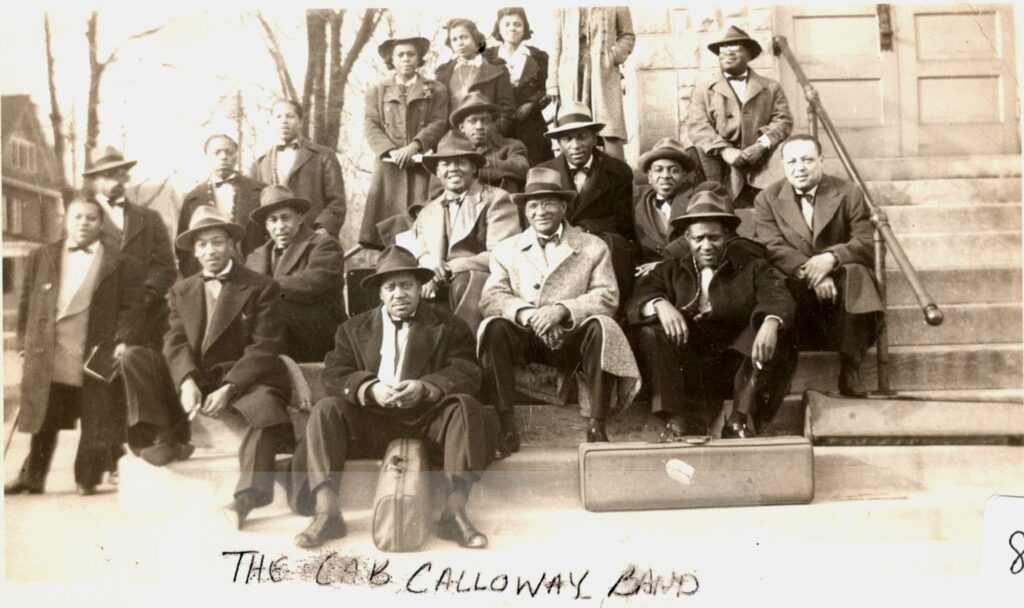
-
1974
Gospel Voices of Faith choir established under Dr. Francine Childs, as part of a resurgence of the congregation (Spectrum Green, Ohio University Yearbook, 1976).
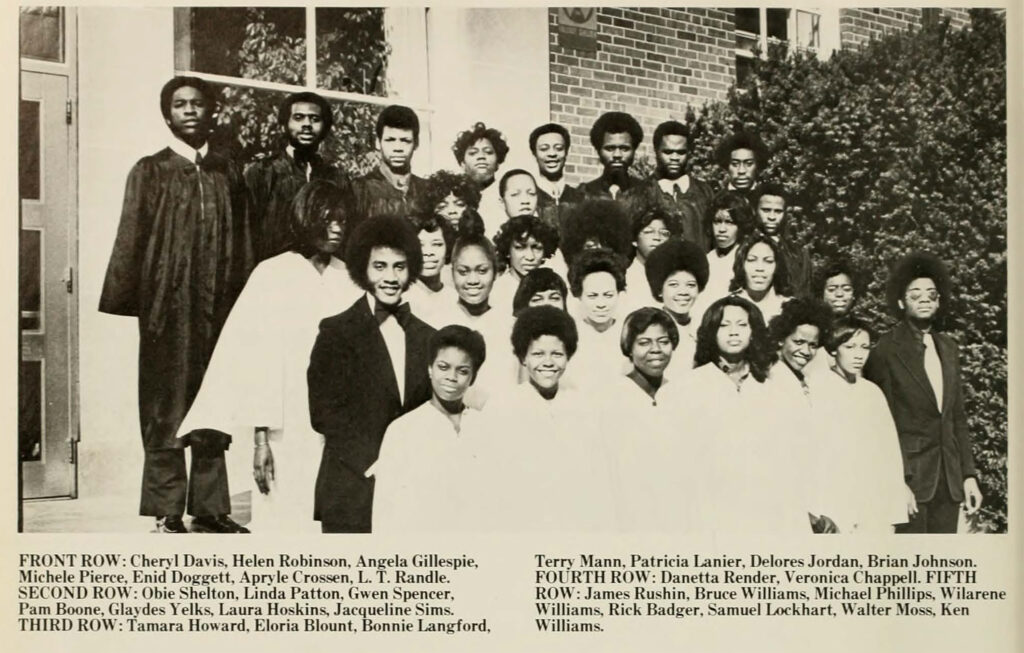
-
1980
Building added to the National Register of Historic Places in acknowledgement of its status as a historical, social, and cultural landmark. Access the nomination form in the National Archives. (Kathleen Andrews, photographer, February 1980)
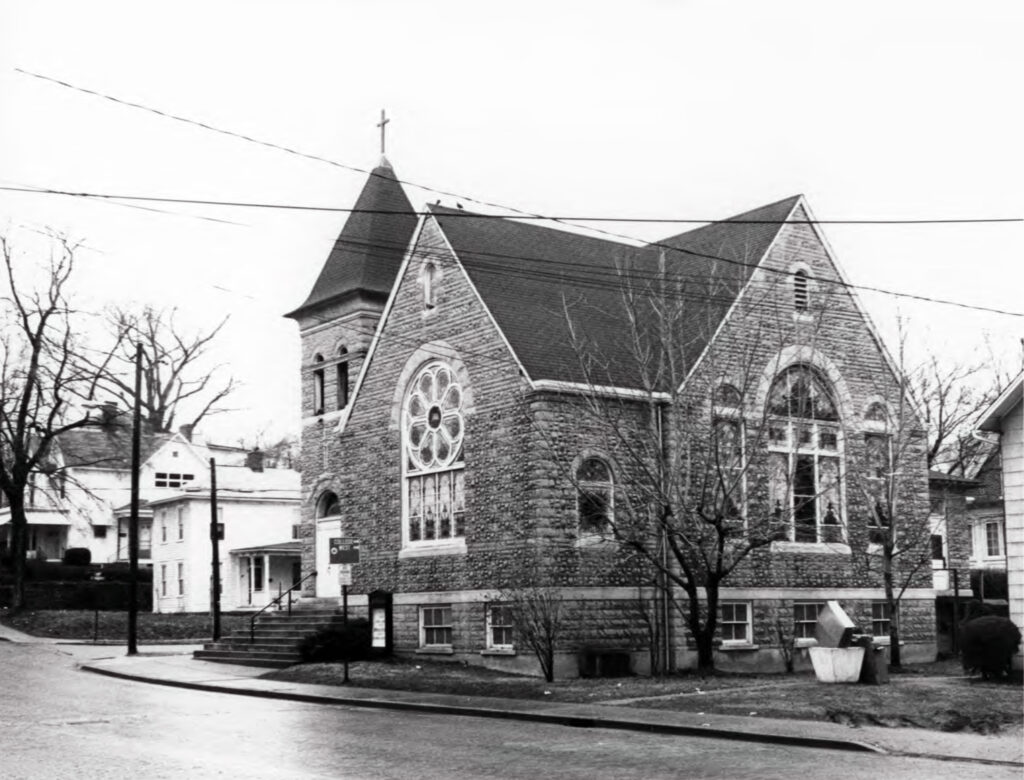
-
1994
Gospel Voices of Faith places 2nd in Gospel Fest, held in New York.
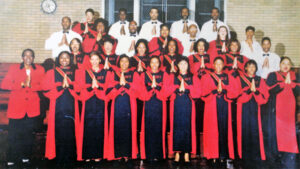
-
2013
Mt. Zion Baptist Church Preservation Society formed. Founding members included Ada Woodson Adams, Ron Luce, Linda Philips, and Henry Woods.

-
2017
A new roof was installed on the historic Mount Zion Baptist Church. The roof was pivotal in halting further damage to the building. Roof installation was one of the first steps in physically rehabilitating the historic church.
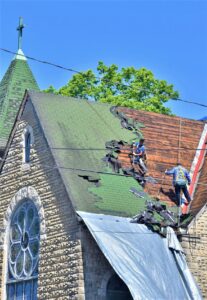
-
2019
Society selected by the National Endowment for the Arts as one of three partner communities to work with the Citizens’ Institute on Rural Design.
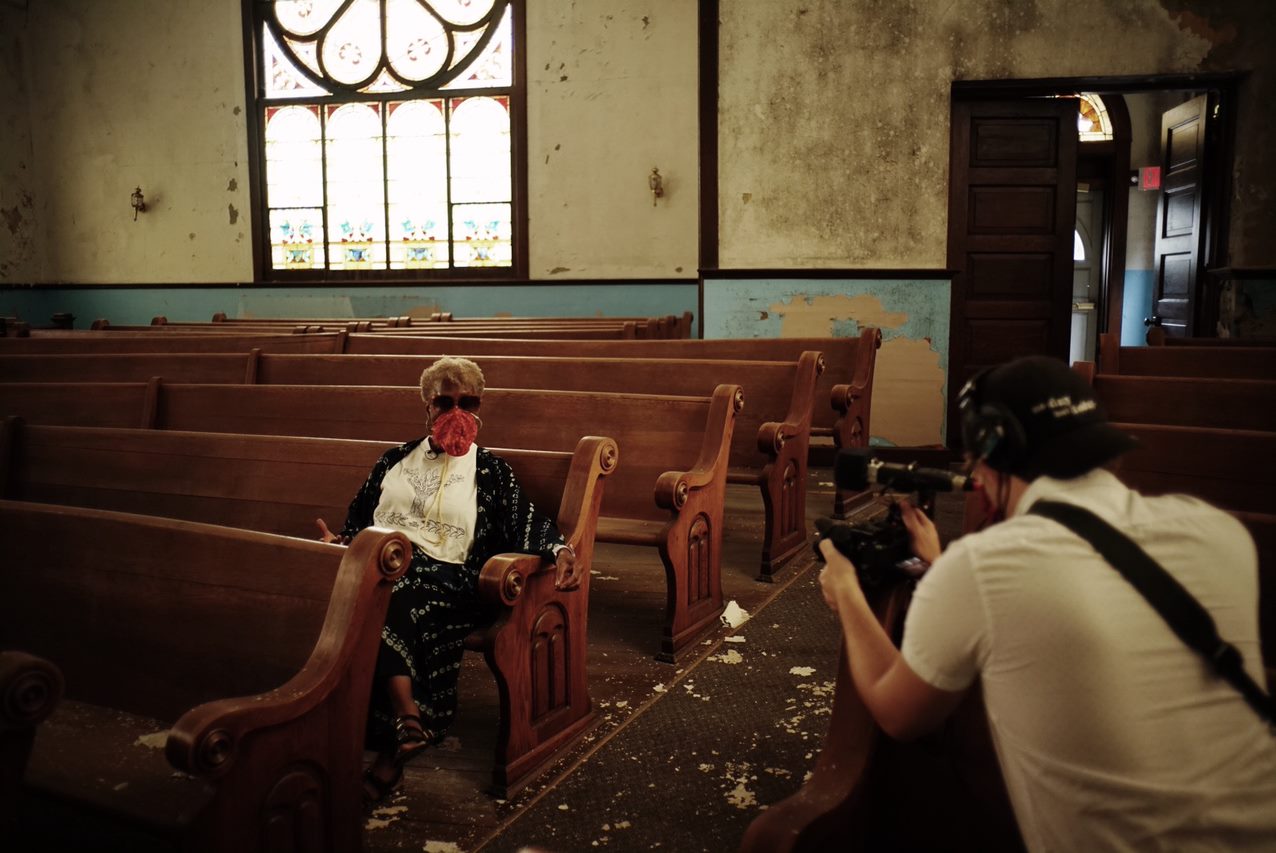
-
2020
Received a $25,000 grant from Ohio History Connection. The grant provided necessary funding to work with Hardlines Design Company, an architecture, planning and historic preservation firm. President and Principal Architect for Hardlines, Charissa W. Durst AIA LEED AP, led the extensive Existing Conditions Investigation of the church.
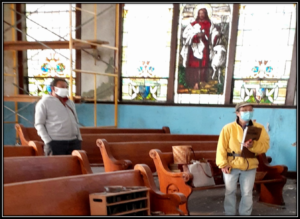
-
2021
The Helen Horn fund and The Rotary Foundation provided additional funding to continue Mount Zion window restoration.
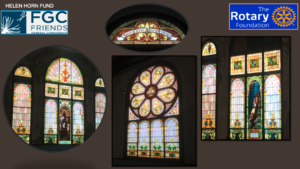
-
2021
Mount Zion Black Cultural Center was awarded $75,000 in 2021 by the African American Cultural Heritage Action Fund through the Smithsonian's National Trust for Historic Preservation. This award provided funding to begin the restoration and rehabilitation for Mount Zion's million dollar windows.
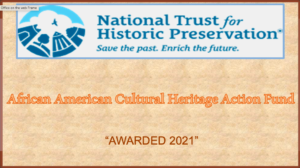
-
2022
Mount Zion Baptist Church Preservation Society officially begins doing business as the Mount Zion Black Cultural Center.
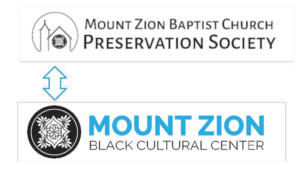
-
2022
During the research for Black Wall Street episode 1, Mount Zion Black Cultural Center members noted continued erasure of Black History within Athens. Working to rectify oversight, Mount Zion members developed a historical walking tour centering local, Black landmarks, narratives, and accomplishments.
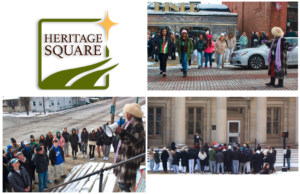
-
2022
Black Wall Street Episode 1 is the first of a three part docuseries that explores the Black architectural and historical erasure in the Appalachian Ohio river valley town of Athens, Ohio.
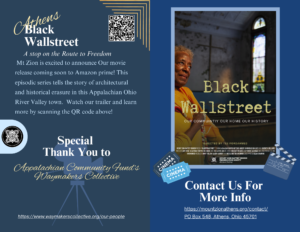
-
2023
Working through the heat of the summer, with a combined effort from Nzilani Glass Conservation and Blind Eye Restoration, the final portions of the Mount Zion rose window were removed in 2023.
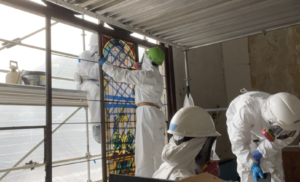
-
2023
Mount Zion Black Cultural Center partners with businesses across Athens to present the inaugural Berry Day Week. Berry Day Week began in commemoration of Black Athenian business owners, Ed and Mattie Berry, originators and owners of Court Street's historic Hotel Berry. As local entrepreneurs and graduates of the Albany Enterprise Academy, one of the first Black established and owned institutions of higher learning in the country, the Berrys donated the land on which Mount Zion Baptist Church stands.
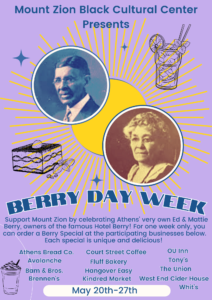
-
2024
Window removal completed in 2023, Mount Zion Black Cultural Center worked with local artist Keith Wilde to create and place murals of the foundational narrative of Mount Zion Baptist Church in the window spaces. The mural was revealed during a public reception on Juneteenth 2024. The murals will stay in place during the window restoration and building rehabilitation, funded by a multi-million dollar grant from the Governors Office of Appalachia.
